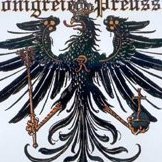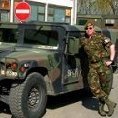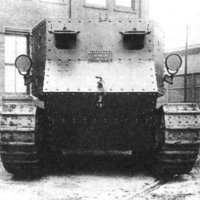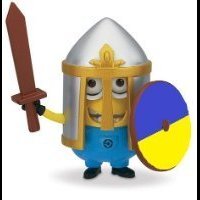Search the Community
Showing results for tags 'WW1'.
-
I have been working on the Eduard 1/72 Fokker D.VII for a few days on a variant made by Ostdeutsche Albatros Werke (OAW). Very nice little kit, but the Wingnut Wings 1/32 kit guide is a great help in building, which is extremely informative! (Unfortunately, I don't have the the WnW kit, but it can be downloaded from their website.) There has been no problem with the model so far. What I added is part of the trunk’s wire stiffening, which is also visible in the cabin, as well as the visible part of the metal frame structure. It will be the dragon machine, Wilhelm Leusch's Fokker.
- 6 replies
-
- 7
-

-
- WW1
- Fokker D.VII
-
(and 1 more)
Tagged with:
-
Anyone know where I can get a 1/48 or 1/32 scale Royal Aircraft Factory RE.8? I know Airfix do a 1/72 version, but I am not keen on the smaller scale models. Everywhere I look the Wingnut and Aeroclub models are out of stock and production. I have just discovered that my Great Uncle, 2Lt George Strachan Gordon RFC was part of 59 Squadron during WW1 as an Observer/Gunner. I would like to make one in time for 19 Aug 2022, which will be the 105th anniversary of the day he was KIA aged 20. Many thanks for any help. Mike
-
Hi, guys... This is my latest build and it's Roden's 1/32 scale Fokker triplane. This is quite a good kit but certainly challenging in places. The fit of the bottom wing was difficult, and I decided to remove the central tab between the wings and add it separately into the lower fuselage, then add in a strengthening spar so that the wings could be re-attached. However, I first had to get over the issue with the parts for the bottom wing's uppersurfaces missing from the box. I thought I could use balsa wood to build up the top surfaces and this worked well. I used some wood filler to smooth out the wood grain on one wing, and standard Humbrol model filler on the other, just as an experiment. Both appear to have worked equally well. Some additional detail was added to the wing leading edges using plastic card, as this detail was evident on the surfaces of the other wings. So, in these images below, you can see the progress of the build. Scrap plastic was carefully heated over a candle and stretched thin, and this was then added into the fuselage interior, after which wood-effect transfers were aded in between the upper and lower areas as they were prominent in the real aircraft. The engine was also put together at this time and along with the various cockpit pieces, all parts were blackwashed prior to installation. Next up, a general 'pale linen' shade was applied to the upper and side surfaces, over which was 'drybrush streaked' pale medium green, then dark green to create the well-known streak camouflage effect on this aircraft. It was applied vertically on the fuselage sides, but diagonally on the wings and upper fuselage. Both shades required two thin coats in order to create some depth. The kit's cowling was replaced using an item from the Aviattic range. And here, the model is now at an advanced stage. The pale blue rear fuselage and tail, and the red cowling, struts and wheel hubs have all been attended to and the markings are now being applied. The aircraft carried the pilot's personal emblem, a swastika with narrow arms, and these were created using items from my spare transfers box. At this time, the swastika was a good luck emblem used by pilots of various nations during the conflict. Additional stencils and various dials were culled from spare WnW transfer sheets. Coming towards the end of the build now, the central and top wings are in place and linked to the wing struts, although the cabane struts have still to be inserted under the centre of the top wing. The guns and propellor are all from the kit and look good after careful painting and blackwashing. Below, this is a good image to show the cockpit detail. The pilot's seat was given a cushion made from a small piece of tissue, wrapped in masking tape which has a slight texture to it, and then trimmed to the shape of the seat. Prior to painting, the 'cushion' was creased and then painted with a thin red and black mix, carefully appying two coats and allowing the black in particular to gather in the creases, thus making it look more authentic. Seat belts were provided from the spares box. The dial for the compass was another item from a WnW transfer sheet. Here on the undersides, the access panel behind the engine and the very thin 'deflector' shield with notches to accommodate the undercarriage struts were ietms not supplied in the kit, therefore were made using thin plastic card. The undersides of the undercarriage aerofoil were not correct for this version, so the detail was filled in and two small rectangles, again from plastic card, were added. Some minimal blackwashing was applied here and on the tailplane hinges, as well as on the added panels behind the engine, where oil often heavily stained this area as a result of escaping from the rotary engine. Some minimal rigging is required between the undercarriage struts and the cabane struts, and I used GasPatch turnbuckles for this task. I especiialy like this photo, as it shows the detail of the replacement cowling very well, and also the leading edge detail on the lower wing which largely compliments the same detail in plastic on the other two wings. An additional fuel tank filler point was opened on the forward fuselage close behind the turnbuckles as only one is provided for in the model All looks good, but... shhh, don't tell anyone the 'Axial' propellor logo is on the wrong way round... if the propellor is vertical, the logo should be readable when standing in front of it, and not upside down... oops! I will do better next time... ;-). And so, the end result. A nice colourful addition to my collection, and thankfully, one that doesn't require too much in the way of rigging. I hope you like the model, and thanks for looking in. If you want to see a short video of the build, you can find it here on my YouTube channel: https://www.youtube.com/watch?v=r61biLArsDU There as also a couple of other videos there of recent builds. Until the next time, keep safe. Regards, Paul
- 10 replies
-
- 27
-

-

-
- WW1
- Fokker Dr.I
-
(and 1 more)
Tagged with:
-
I guess it comes as no surprise that I've started with the cockpit. I simply love the wicker seats which come with the kit I think they look superb. Everything falls in its place without any problems so far.
- 10 replies
-
- 15
-

-
Lloyd C.V Lukgraph 1/32 The model has been really pleasant to build. The woodgrain is Lukgraph's decals. I've added some minor details like the binoculars or the anemometer. The propeller has been laser-cut by my friend Michał Jakś and carved by me. Overall I'm quite happy with the result. I hope to see more Austro-Hungarian subjects coming from Lukgraph.
-
Lloyd C.V Lukgraph 1/32 The model has been really pleasant to build. The woodgrain is Lukgraph's decals. I've added some minor details like the binoculars or the anemometer. The propeller has been laser-cut by my friend Michał Jakś and carved by me. Overall I'm quite happy with the result. I hope to see more Austro-Hungarian subjects coming from Lukgraph.
-
Guess what I'm going to build now!!! So I'm lucky enough to be able to wrap my dirty fingers around the new BE2C from LUKGRAPH. Here are a couple of thoughts and photos. The BE2C is one of those iconic aircraft of the Great War which has not been represented on a 1/32 scale yet. Thie workhorse of the RFC is finally here. The kit is in my opinion the best model by Lukgraph - so far. Well-detailed, with crisply casted resin parts and with a lot of painting schemes, it's going to be a true joy to build. There are both 3D-printed and resin parts, a PE fret, a huge decal sheet and a superb instructions booklet. The 3D printed engine, bomb racks and wicker seats are simply gorgeous! Well done Łukasz! Here are the shots:
-
Hello all 🥳 The construction of the T54 has been delayed a bit 😴, so I have started a new project 😁 For a change, it's not a track, but wheels - 6 to be precise. Besides tanks, I also love building trucks and exotic models that you don't see every day. Today I would like to introduce you to one of my favourite vehicles, the Austin Armoured Car 1918 Pattern by Miniart. I find the WW1 theme at least as exciting as WW2, so there will be more to come.... Ok, now to the model: The box is full to bursting with parts, some of which are very fine and fragile. The connections of the sprues are partly very large which makes it difficult to loosen the parts - beware of the danger of breakage! The soft Miniart plastic is not my cup of tea, some Parts were warped / bent in my kit. But anyway-there is only this supplier for the Austin and as a modeller every new kit is a challenge. If you are interested in the build, I can o highly recommend Andy Moore's report on TMN. From my point of view a very good kit with complete interior and the option to show many doors, hatches and flaps open. Plus nicely detailed wheels and a engine as a model within a model. Maybe not for beginners or people with little patience (sometimes you have to find out by yourself how the parts fit together best), but therefore something special. As usual I will also build a small vignette, hence the title: "Greetings from the front". Enough words and have fun! MD Nice Boxart Many parts inside The decals look good Many fragile small parts that can cost nerves I recommend loosening the parts with a PE saw or rebuilding them. It is very difficult to clean these small parts. The frame parts were bent in my case I have already glued and fixed the largest parts in this step. I will do the fine details on the engine and frame later, so nothing can break off and cleaning is much easier because of the handling on the frame. Of course, you have to study the instructions carefully to see what needs to be done first and what can be left out. The main frame work is done Whenever the glue dries (which it has to do very well with this soft plastic), I prepare new parts for the next steps. some nice references 🙂👌 See you!
- 36 replies
-
- 14
-

-
Hi folks…! Well the dust has thoroughly settled on my Pierce Arrow AA truck, and so it’s time to consider the next project. I had a bit of a palate-cleanser in the form of the Vickers gun crew that I bought to provide a decent machine gun to clone for the last scratchbuild. I stuck the two chaps and their weapon together and mounted them on a little round base made from a piece of insulation foam stuffed into an olive jar lid as a figure painting practice more than anything, and rather enjoyed it, though I still seem to be struggling to improve my figure painting skills. So the stash is empty and I admit that I can’t really get myself excited about kits – it needs to be another scratchbuild. Trawling the Landships II website, I came across this vehicle…. The mighty Mk1 gun carrier. Based loosely on a Mk1 tank, it was intended to be the first self-propelled gun, carrying either a 6” howitzer (as above) or a 60 pounder. The 60 pounder was too ferocious a weapon to fire in-situ, so had to be demounted for firing, but the howitzer could stay on board while it did its damage. Strategically the opportunity never really came up for these vehicles to fulfil their intended role, so they were converted into supply tanks, recovery vehicles and ad-hoc troop carriers it seems. Panzerart do a kit (a whole series of them covering all the variants in fact) but it’s very expensive, and pretty hard to get hold of. Also, being resin, not terribly appealing to me. I seem to have developed an allergic reaction to superglue, so too much of it during a modelling session and I sneeze for days and my eyes are streaming. This doesn’t promise an enjoyable build experience! It’s a beast of a vehicle, slab-sided and covered in rivets – yeah! So ripe for scratching! The Landships II site contains a good bit of background info and more importantly, an excellent and very detailed cardboard model template and instructions produced by Clifton W McCullough. He’s provided both the vehicle itself and the howitzer, and just building the cardboard model would be a considerable challenge and should produce an excellent and highly detailed model, including interior detail and engine – really impressive stuff. Of course I’ll tweak his cardboard instructions and template to get the thing constructed from plastic. I kind of have a kit after all with these excellent templates, so time to assemble the other necessary ingredients. I ordered 5 A3 sheets of 0.75mm plasticard plus a number of A4 sheets of 0.5mm and 0.2mm. The rivets on my last couple of projects went pretty well using “nail caviar” – small decorative balls intended to be glued onto one’s digits. I’ve got these in 0.6mm, 0.8mm and 1.0mm, but the 0.6mm ones are rather irregular in both size and shape. For the Pierce Arrow I used 0.8mm which are much more consistent, but really way too big when the finished model is compared to photos. A search on ebay for “0.4mm balls” came up with solder balls – ah-ha! I ordered some 0.2mm and 0.4mm. The 0.2mm are unbelievably tiny – more like dust than visible balls, so I don’t think I’ll have much use for these, and the 0.4mm are really the smallest I’ll consider for rivets. I’ll order some 0.6mm as well. The consistency of these solder balls seems to be absolute – 0.4mm really is 0.4mm. To go along with these, I ordered a bunch of drill bits – 0.15, 0.35, 0.7 and 0.9mm – 10 of each, as they’ll snap as soon as look at them. The idea is that the balls sit in/on holes slightly smaller than the balls’ diameter. A slosh of Tamiya extra thin creates a tiny crater, and they’re held in place that way. Talking of which, I also ordered a bottle of Tamiya airbrush cleaner, which I’m led to believe is exactly the same stuff as extra thin cement, but much cheaper. I inserted the template images into CAD software and re-scaled them up to 1/35 (the originals are intended to produce a 1/48 model), tracing over most of the major detail to get nice, sharp images. The parts were re-arranged to make best use of the A3/A4 size and they were printed out – here’s a typical sheet: As usual, these will be spray-mounted onto the plastic, drilled for rivets and cut out, and so it begins!
-
And it’s done! Here’s my Pierce-Arrow AA truck…. All scratchbuilt using plastic card/rod/tube, with a few brass touches. This is honestly the best fun I’ve ever had model making. For those tempted but scared of scratchbuilding, I’d recommend going for it – it’s not that daunting if you pick a nice, square subject and the sense of accomplishment is stellar. WIP progress can be found here… Thanks to everyone who’s supported me through this build - it's been a blast! Painted with a selection of enamels and acrylics with oils and pastels for weathering. I’ve not quite finished here – I need to do a few little touch-ups like another overall matt coat and drops of shiny stuff for the binocular lenses. I’ll then re-unite this with its diorama and figure – so watch this space! Current top contender for the next scratch is a Mk1 gun carrier with 60 pounder - it'll be a beast!
-
Not without pride, I announce another project finished. The diorama depicts a French St. Chaumont tank with part of the crew, resting next to a factory ruin, while a Belgian dog cart passes by. First I have to say that the roof of the factory is not to my satisfaction. But if I want to correct this, it will be rather destructive, so I leave it as is. Enjoy the pictures, and please watch the video for a nice surprise…
- 12 replies
-
- 26
-

-
- 1:35
- St. Chamont
-
(and 1 more)
Tagged with:
-
Hello everyone, Here is my latest completion, the Airfix 1/72 DH4. This kit has its origins in 1967, making it some 54 years old. Despite its age, the kit is generally accurate in outline and dimensions, and is a great base for a detailing project. It does need some TLC, as the base kit has exaggerated wing ribs, incorrect engine cowling / louver details at the front end, and no cockpit to speak of. It also has a rudimentary “U” shaped set of struts, which slot into channels in the upper wing (leaving unsightly and inaccurate gaps). Hence, I filled in the strut channels, sanded down the flying surfaces, scratch built a new cockpit, corrected the engine louvers to more accurately represent a Rolls Royce Eagle powered variant, added new guns, and various other bits and pieces. I painted the model in the markings of A7422 of No 110 SQN, mid 1917. The markings are a combination of sprayed (for the SQN insignia and number), and decals (roundels, serials). Rigging is using Uschii elastic. Anyways, here are some pictures. I made up a base that paid homage to the old “Palitoy” boxings from the 1980s (this kit never saw a boxing during this time). Here’s some more ‘normal’ pictures: And some progress pictures (for more progress pictures and details of the build, see here https://forum.ww1aircraftmodels.com/index.php?topic=12349.0 ): And lastly, I couldn’t resist making up my own Palitoy boxtop (noting again that this kit was never released in this type of boxing): .... oh, and here’s my ‘dogfight double’; with the old Airfix Albatros from 1957 (for more on the Albatros, see here - https://www.britmodeller.com/forums/index.php?/topic/235078105-tribute-to-a-simple-time/ ) This kit is actually quite a good one for its time. It builds easily, is generally accurate, and is a solid base for some additional detailing. Quite a fun project, and a tribute to a simpler time, all in all 😊 All comments and feedback welcome! Cheers, Brad
- 59 replies
-
- 90
-

-

-
This figure arrived today, all the way from Latvia in less than a week. 1/35th scale, obviously, and designed to fit the Copper State Models Canadian MG Carrier (which is a lovely kit, by the way). In case anyone's interested (possibly not!), I took some photos. You can see how there's a bit more cleanup needed than with some figures, but it's not bad at all. The neck needs some smoothing and the fit needs some fettling, which is made harder on the arms by the unusual use of lugs and sockets. I prefer flat surfaces for arms; a bit harder to glue but easier to fettle. This is where he's designed to stand. Pretty much perfect alignment, to be fair. The head wouldn't stay in on its own, though, so he's already been nicknamed Sir Humphrey Bone (fans of Ghosts on BBC1 will get that reference!) "Oh, no, not again. I can't... reach... my head."
-
Good day, colleagues and sympathizers. Finally, I caught inspiration and" brought " to mind a couple of long-term projects.So-a British 3-ton truck.It was used in the British troops during the First World War.To be honest, I didn't go much into the history of the prototype, and there is little about it(well, or I don't know how to use Google, who knows?...) About the build. Miniart-well done. Traction, engine, controls - everything is very well detailed. But the problem, as always, lies in the poor quality of plastic and extremely peculiar injection molding.Half of the rods were eventually replaced with tubes/wire, etc. The hood assembly was also not pleased. The result - you see in front of you. Coloring - RealColor, Akan, Tamiya. Oils and pigments-Ammo and co. The junk in the back is a miniart and some other bags from the stash boxes. Thank you for your attention, enjoy watching!
-
I'm going to join this interesting GB with an ancient Revell Nieuport 28. It's tiny! I picked this kit up recently at the 'Antiques Warehouse' I mentioned during the last Frog GB and even though that stash is sorely depleted (all the Heller sailing ships have gone) this little beauty was still there (along with a Frog Bleriot XI). The camouflage and markings are pretty striking and this particular aircraft was flown by Lt. Douglas Campbell of the A.E.F. Simple construction and the transfers look to be in good condition. This kit is from the 1960's Very light grey, almost translucent, plastic with a little flash on one of the cabane struts. I think I'll enjoy this one
- 15 replies
-
- 9
-

-
- Revell
- Nieuport 28
-
(and 1 more)
Tagged with:
-
Hi everybody, After recently completing my first ever scratch build I am jumping back into the deep end. The BE2c has long been a favourite of mine but has never been available as a 1/32 kit so the only option is to get stuck in and have a go at scratch building one. The version I want to model has a Royal Aircraft Factory 1a engine which is not available as an after market kit so that is where I shall start. The engine looks quite complicated so let's just see how far this goes, if nothing else the modelling Gods might take pity and give us a kit. Here is a picture from the front; Royal Aircraft Factory 1a V8 engine by Richard Williams, on Flickr Scary stuff! The crank case at least is just a box and the massive fly wheel is just a circle at the back. A few bits and bobs stuck together gives me this; RAF 1A V8 engine by Richard Williams, on Flickr The mounting beams are left long for ease of handling and will be cut down once the frame is together. RAF 1A V8 engine by Richard Williams, on Flickr Not he most impressive work for sure but it's a start! I don't know the name for the tear drop shaped housing that the prop shaft goes into, whatever it is called I made with laminated 2mm styrene sheet cut and filed into shape. Handily this gave me a centre line for adding the bolt fixing channels. The bolts (correct number of!) were added by using a similar method to my riveting method. 2mm lengths of 0.5mm brass tube were cut and using a paintbrush were applied with Future floor wax. Nice and easy because it can be rolled into position. 20210811_224652 by Richard Williams, on Flickr Once dried super thin super glue is applied to each one and zapped with Zip Kicker. Hopefully this gives the look of them being part of the casting rather than separate parts stuck on. A quick lick of paint to see how it looks reveals a few blobs of CA glue that need to go but I quite like the overall look. 20210811_231525 by Richard Williams, on Flickr Cooling fins were added to by cutting tiny pieces of styrene. Gel super glue was added to the engine part and using tweezers the fins were added. Great care needed to be taken to hole the fins so the tweezers didn't touch the glue, not 100% successful but at least nothing pinged across the room. 20210812_193956 by Richard Williams, on Flickr Again, super thin super glue was run down each fin in the hope of making them look like part of a 1 piece casting. The main parts are just tacked together with a tiny blob of glue for ease of handling but it is beginning to look like an engine! I won't have any time for a few days so here it will stay for now. Thanks for watching, all comments, criticisms and advice gratefully received. Have a great weekend. Richie
- 481 replies
-
- 20
-

-
Dear all, Here is my first effort at a scratch build. This is modelled on Bristol Scout 1264 which lives at Old Warden in the Shuttleworth Collection. When I first set eyes on this pretty little biplane I decided I had to make one in 1/32 but no kit was available so with the encouragement of a friend I dived headlong into the scratch building pond. Although it took just over a year, most of the time was spent scratching my head, rubbing my chin and staring blankly into space. It is by no means perfect and I could spend forever retouching and refining things but if I take my glasses off it looks terrific to me from a distance and most importantly I had so much fun with this project. To anybody contemplating scratch building I would highly recommend just having a go. The materials are cheap or free, for instance the cowling is the lid of a sauce bottle. Anything you cock up can always be remade and you will learn a lot, especially about the virtues of planning and patience but above all you will have great fun. What have you got to lose? Anyway enough my random ramblings, here are the photographs, I hope you like the Bristol Scout and are encouraged to learn about this wonderful aircraft and have a go at scratch building something. 1/32 Scratch built Bristol Scout by Richard Williams, on Flickr 1/32 Scratch built Bristol Scout by Richard Williams, on Flickr 1/32 Scratch built Bristol Scout by Richard Williams, on Flickr 1/32 Scratch built Bristol Scout by Richard Williams, on Flickr 1/32 Scratch built Bristol Scout by Richard Williams, on Flickr 1/32 Scratch built Bristol Scout by Richard Williams, on Flickr 1/32 Scratch built Bristol Scout by Richard Williams, on Flickr 1/32 Scratch built Bristol Scout by Richard Williams, on Flickr 1/32 Scratch built Bristol Scout by Richard Williams, on Flickr Many thanks for looking in. Here is a link to the build thread in case you are interested Richie
- 34 replies
-
- 34
-

-

-
- WW1
- Scratchbuild
-
(and 1 more)
Tagged with:
-
British Fighter Aircraft in WW1 Design, Construction and Innovation. By Mark C. Wilkins. Casemate Publishers. ISBN 9781612008813 The Great War heralded a fascinating era of aeronautical development, coming as it did just as the very first aviators and their machines were establishing themselves in Europe. As answers to various problems were sought a huge range of designs were tried, from tail first canards, pusher and tractor engines, monoplanes, biplanes, triplanes and more. This book is a natural follow on from the same authors previous work 'German Fighter Aircraft in World war 1', reviewed here in 2019. Filling 192 pages it is richly illustrated with around 250 photographs and drawings, many of them contemporary. It is printed on good quality glossy paper, dimensions 254mm x 203mm, between hardback covers. Sections are: Introduction The British Aircraft Industry The British and Colonial Aeroplane Company (B&CAC)/Bristol The Royal Aircraft Factory Aircraft Manufacturing Company (Airco) A. V. Roe & Company (Avro) Sopwith Aviation Company Engines and Props Conclusion Appendix 1: The 1915 Defence of the Realm act Appendix 2. Aircraft Designer Patents Notes Bibliography Modern full colour photographs are used to illustrate preserved machines such as those owned by the Shuttleworth collection. Others cover reproduction machines under construction such as John Saunders SE5a, and John Shaws beautiful Sopwith Camel, shown below: These are accompanied by detailed drawings/sketches of key components such as tailskids, interrupter gear, and others. All valuable information for modellers. I particularly liked the period advertisements, and factory shots of aircraft under construction which are very atmospheric. The major manufacturers are covered in dedicated chapters, featuring individual aircraft such as the Bristol Scout and F.2B, the RAF BE.2 and SE5a, Avro 504 (not really a fighter, but it fits in well) and Sopwiths Pup, Triplane, and Camel to name a few. This is rounded off with a very interesting chapter on engines and propeller manufacturing. Finally there is a selection of original patent drawings covering Avro's method of seat mounting to Sopwiths method of securing rigging wires (- and it's not a turnbuckle!). It is not a book to give you a detailed history of each aircraft, rather it describes the development of the various companies and some of the deigns they produced. There is as much information on Tommy Sopwith and the establishment of his famous company, as there is about the aircraft themselves. Plenty of anecdotes are sprinkled through the chapters, I particularly like the contemporary accounts from pilots. For example, Elliot White Springs, US 148 Aero Sqn "in a dogfight down low nothing could get away from it...a Camel could make a monkey out of an SE or a Fokker at treetop level but it couldn't zoom and it couldn't dive". Conclusion When looking back to earlier times, nothing is more important than context. To properly understand the story being told, the reader needs to be 'in the shoes' of the people of the time, and see things from their knowledge base and social values. This something this book does so well. The introduction and first chapter set the scene very well, setting out how British design lagged behind the French, and developed in different ways to the Germans. The author makes interesting points that I not considered before, such as the British use of the wooden box girder fuselage on all major designs throughout the war, while other nations used welded steel or plywood semi-monocoques. He also discusses how designs not only had to be good flying machines, but also had to be practical to build, transport, and maintain. There is a great deal of original thought and presentation that lifts this book above being just another book about First World War Aviation. It is a 'Sunday Morning' book, sit in your favourite armchair with a mug of tea, and spend a pleasant hour or so reading and enjoying this lovely book. There are a good few Sunday mornings to be had! Highly Recommended. Review sample courtesy of
-
I realise that my AA truck project is now actually becoming two projects in one – the truck itself… ….and the diorama for it, so I thought I’d best split it into two threads. This first post is a repeat of what I’ve already posted in the truck thread. Whilst I’m building this for the AA truck, I may use this scene as a “standard” base for photographing all sorts of vehicles in the future. TheAA2000’s recent fantastic work inspired me… So I want to try something similar (or at least as close as I can get). The use of a strong vertical element is definitely a winner in composition terms, so I’m planning to ape his superb work and construct a building. I did consider building the tail of a German aerial victim, crashed into the ground, but 1/35 scale WW1 German aircraft kits are a bit thin on the ground, and scratching one would be more work than the actual AA truck, plus I couldn’t quite visualise how I’d do the wreckage, so a building it will be. I also usually include figures. I like doing figures, but I have much room for improvement, and for this one, I’m currently inclined to leave them out. One of my reference photos appears to show the truck in a French(?) street with a rather formal building behind. I browsed the Miniart series of buildings on-line and found one I could base mine on – I’ll scratchbuild it of course. I bought some 5mm foamboard from a local sign shop – good value (I think) at £20 for three 1.5m x 500mm sheets which should last me basically forever. I’ve not used this stuff before, but I love it already! Glues with plastic cement (it’s polystyrene after all) and it cuts and shapes really nicely. If you’ve not used it, think firm but slightly squishy plasticard. I cut out a base and set (pun intended) about carving out some cobbles using the back of a fairly hefty Xacto blade. I marked out the lines in pencil, but then used the blade freehand to get a bit of wobble. Please forgive the crappy photo quality – I’m missing photoshop at the moment and relying on windows “tools”. Despite the slightly wobbly lines, they were still a bit too regular, so I “damaged” the tops with the handle of the knife – really pleased with the result, and it’s so easy! I cut a selection of thinner slices of foam – this isn’t easy, but the resulting, again, rather wobbly thickness I can live with. This stuff is so flat and regular, that a bit of variation helps I think. These were glued on using tube cement to form the pavement, and the kerbs and paving slabs carved in using the back of a scalpel this time for thinner joins. Here’s the overall base so far. Great fun! I’ve drawn up a building façade on CAD, but I scaled it a bit too big (familiar cock-up), so need to re-print before I can cut that out, but I’m really looking forward to it.
-
Hello ship fans, the dazzle camouflage of WW1 ships makes an attractive and challenging subject for ship modellers and I've been fascinated by this subject for many years. So, joy of joys, a new book on the subject has been published very recently: “The Easter Egg Fleet. American ship camouflage in WW1”, by Aryeh Wetherhorn? I received my copy (paperback version) yesterday and it is marvellous – reproductions of most of the USN and merchant dazzle plans (as per the Admiralty Orders in the IWM). Both port and starboard profiles are shown in most cases. These are preceded by a decent (although obviously American-biased) overview of international laws pertaining to maritime warfare, USN camouflage theories and practice, submarine warfare in context, the British connection, etc. Various photographs are not very well reproduced though. Fabulous stuff, and grist for doing one or two Caldwell/Wickes/Clemson flush-deckers or the earlier USN destroyer classes, plus several armoured cruisers and battleships that are available in kit form. I’ve just ordered a Combrig 1/700 USS Birmingham to build in its beautiful (actually Admiralty designed) camouflage. A pity that the IWM can't put together a compendium of its many Orders. Cheers, GrahamB
-
Airfix 1/72 Fokker E.III Eindecker, 105/15, of Ernst Udet
- 12 replies
-
- 48
-

-
Hi everyone – work has been keeping me very busy of late, so here is my latest completion (my first in well over six months), the 1/48 Eduard Morane Saulnier Type N "Bullet". This is the 8090 non-profipack kit, released 15 years ago back in 2004. The kit is quite an easy build (which is what I needed, having not really built much recently), but I did make a few adjustments and additions here and there. I added some RFC style seatbelts, wiring for instruments, some spare Lewis drums in the cockpit, a gaspatch Lewis gun, some external details here and there, strengthened the tailplane by replacing the elevator shaft with brass tube, and replaced the kit wheels (which are way too small) with Eduard after-market RFC-style wheels. The markings came from the spares box. The kit was painted in the markings of A.175 of No 60 SQN, Royal Flying Corps. This was the machine in which the first Commanding Officer of 60 SQN, Major Francis “Ferdy” Waldron, was shot down and mortally wounded on 03 July 1916. The encounter is described thus in Alex Revell’s Osprey Book on 60 SQN RFC: “On the morning of 3 July, ‘Ferdy’ Waldron led 5 bullets in a patrol to decoy attention away from NE 2cs attacking St Quentin. Lts J H Simpson and D V Armstrong fell out with engine trouble, but Waldron, Lt H H Balfour and Capt R R Smith-Barry flew on, above the Arras to Cambrai road. Approaching Cambrai, a formation of enemy two seaters, led by a Fokker E Type was seen, followed by two additional Fokker monoplanes, bringing the number of enemy machines to around a dozen. Undeterred by these odds, Waldron immediately led Balfour and Smith-Barry in an attack. Harrold Balfour later wrote: ‘I’m sure they were not contemplating war at all but Ferdy pointed us towards them and led us straight in. My next impressions were rather mixed. I seemed to be surrounded by Huns in two-seaters’. Waldron was outmanoeuvred and attacked by a two seater, flown by Uffz Howe of FA5b. Balfour saw that his CO was in trouble and succeeded in driving off the enemy, but the damage was done. Waldron had been badly wounded, and although he managed to crash land his damaged Morane behind enemy line, he died of his wounds that night”. Indeed a brave chap, who suffered the same fate as many who courageously faced enormous odds in combat above the front lines. Anyways, here are some pictures: All in all, not my best build but certainly good to finally get a run on the board for 2021. All feedback welcomed as always! Cheers, Brad
- 11 replies
-
- 40
-

-

-
Takom continues to surprise us with its choice of subjects. 1:350 Zeppelins; the P and Q class becomes half a meter long in that scale - in the same scale as many WW1 ship kits. The Q-class is of interest to me as L-20 drifted ashore in Norway and some bits and pieces are on show in the museum at Stavanger-Sola.
-
In tandem with my ...slowboat... Shavrov Sh-2 build here on BritModeller, this marvellous example of Flash engineering hiding a Hansa Brandenburg aircraft within must be revealed as precisely what happens when your moulds become "cream-crackered". EE certainly knew the problem well, evidently, as does Roden. I have, then, for your reading pleasure, started this thing without due praise and/or reward because the H-B D.I was an interesting plane in its own light and the kit is becoming rarer now, most probably because nobody but me wishes to spend all day cutting through whole acres of flash. Hannants has a few left at the time of posting, iirc. The aircraft: Our HB D.I wil be: from Flik 16D, Serial: 28.30 flown by one Erwin Funk, a brilliant name that anyone would give their left Schwarzlose to possess. Here's a profile: (The angled gun is a typical Flik 16D modification as well as the enlarged windscreen, allegedly). I like the simple cherry coloured band on 28.30 because it ties in rather absurdly with a song from my favouritest indie popsters and, well, it gives me a go at smothering raw ochre oil paints over feeble acrylic undercoats; always time well spent in the life of a modern day artisan with his (or her) moustaches, fan brush and paisley cravat. TBC with pics ... and Best Wishes to you.












